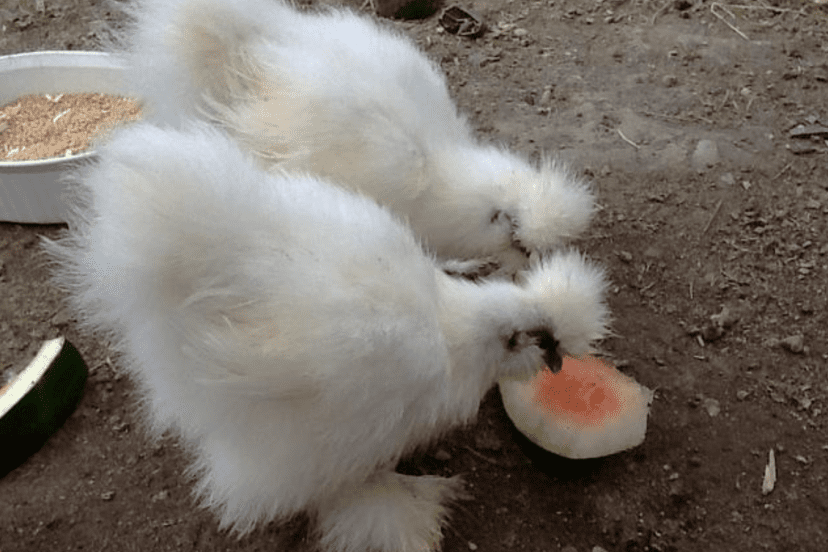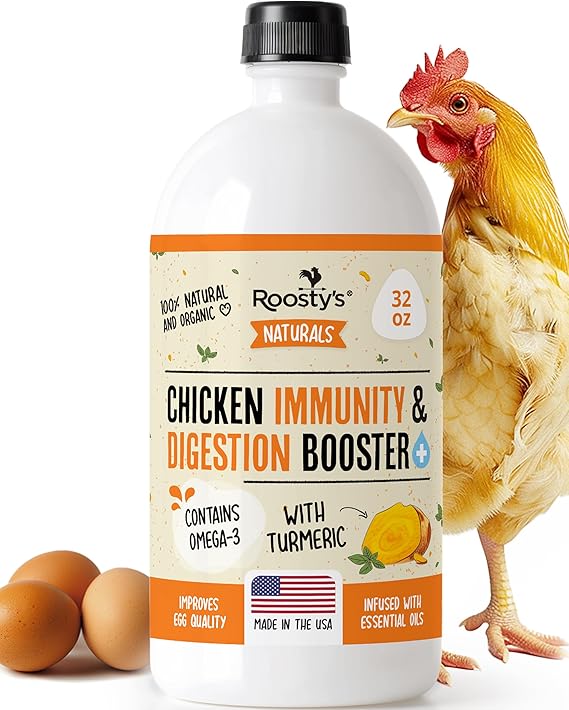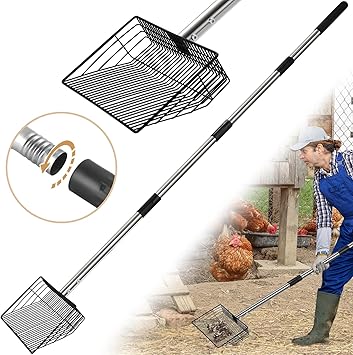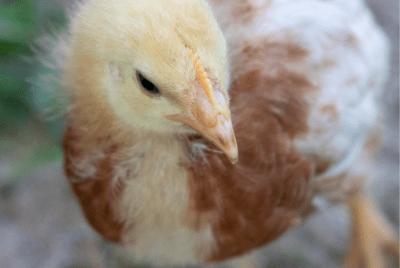Silkie Chickens
Introduction to Silkie Chickens
1.Introduction:
When I was moving to a new State, I was going to sell all of my stock, totaling over 22 breeds. However, I couldn’t let go of the gorgeous little Silkie Chickens. I’ve always been fascinated by this unique and charming breed. These birds, with their distinct fluffy plumage and gentle demeanor, have captured the hearts of many poultry lovers around the world. Their soft, cloud-like feathers and friendly nature make them more than just chickens; they are a source of joy and fascination. Children always adore the silkie chicken in their flock. They pick them up and cuddle them and play with them.
1.1. Silkies as Pets:
For children, these little birds are like puffs of magic. Unlike most birds that fly away as children approach, Silkie chickens exhibit a remarkable tolerance for interaction. They allow themselves to be picked up, dressed up, and played with, often becoming a beloved part of playtime adventures.
For a child with a fondness for birds, a Silkie chicken offers a gentle and engaging experience. Their approachability and willingness to be handled gently, make them an ideal choice for families with young children. Creating memorable moments and nurturing a love for animals from a young age.
Silkie Chickens bring a lot of magic to your life because they are so aesthetic. If you are considering chickens consider 1 or 2 of these to mix in with your flock. Make sure you get them all as chicks so they grow up together, then their is less of a chance that they will be bullied by the larger hens. They will have become friends if they have all grown up together.
These little chickens that I refer to as pompom chickens, will hatch your fertile eggs for you. From my personal experience, the overwhelming majority of Silkies grow up to become very good mothers. Some of the other breeds not so much. Not only that Silkie mothers as most mothers will bring up any chicks they hatch.

1.2. What are Silkie Chickens?
Silkie chickens, a remarkable and visually striking breed, stand out in the poultry world for their unique characteristics. Originating from Asia, these birds are particularly known for their fluffy, silk-like plumage, which feels as soft as cotton to the touch.
Unlike most chicken breeds, Silkies have feathers that lack the usual barbicels, resulting in a hair-like appearance. This distinctive feature is complemented by several other unusual traits: they have black skin and bones, blue earlobes, and an extra toe, making them have five toes per foot as opposed to the usual four found in other chickens.
Silkies are relatively small in size, and they come in a variety of colors. Their gentle and friendly temperament makes them ideal as pets and beloved by chicken enthusiasts worldwide. They’re also well-known for their mothering capabilities, often being used to hatch eggs from other breeds due to their strong brooding instincts. This combination of peculiar physical traits and agreeable nature makes Silkie chickens a fascinating subject for both novice and experienced poultry keepers.
2. Brief History and Origin
The history and origin of Silkie chickens are as intriguing as their appearance. These birds trace their roots back to ancient China, with the earliest mentions dating to the Han dynasty over 2,000 years ago. Revered for their unique features, Silkies were often shrouded in mystery and myth, sometimes believed to possess magical qualities in Chinese folklore. Their distinctive black skin and bones were even thought to have medicinal properties.
Silkies were introduced to the Western world through the Silk Road, the ancient network of trade routes connecting Asia with Europe and Africa. By the time of Marco Polo in the 13th century, Silkies were well-known in the East, and his writings helped to spark curiosity about them in Europe.
This introduction led to Silkies being kept for both ornamental and practical purposes. Over the centuries, they have spread across the world, captivating many with their unusual looks and endearing personalities. Today, Silkies are celebrated in many countries as charming pets and show birds, continuing their legacy as one of the most unique chicken breeds in history.
3. Unique Characteristics of Silkies

Silkie chickens are renowned for their distinct and captivating physical features that set them apart from other chicken breeds. The most striking attribute is their fluffy, soft plumage, which closely resembles silk or satin, giving them their name.
Unlike typical feathers, Silkie plumage lacks barbicels, rendering them incapable of flight but endowing them with an irresistibly fluffy appearance. This unique feathering covers their entire body, including their head, creating a puffball effect.
In addition to their luxurious feathers, Silkies possess several other distinctive features.
They have a small, compact body size, contributing to their adorable appearance. One of the most unusual aspects is their black skin and bones, a genetic trait called fibromelanosis, which gives them a striking appearance when viewed closely.
Another notable characteristic is their blue earlobes, adding to their exotic look. Furthermore, Silkies have five toes on each foot, unlike the standard four toes on other chickens.
This combination of extraordinary features makes Silkies a fascinating and visually unique breed in the poultry world.
3.1. Physical Features
Silkie chickens boast an array of distinctive physical traits that distinguish them from other breeds.
Their most notable feature is the soft, fluffy plumage that resembles silk, covering their entire body and giving them a charming, cloud-like appearance. This unique feather structure is due to the absence of barbicels, making them non-flight birds.
Silkies are also known for their striking black skin and bones, a rare genetic trait called fibromelanosis.
Adding to their uniqueness are the blue earlobes and an extra toe on each foot, as they have five toes rather than the typical four found in other chicken breeds.
These features make Silkies a visually captivating and highly sought-after breed in the poultry world.
With Silkies These Roosting bars can be propped up horizontally on bricks not too high off the ground. They love them.
3.2. Temperament and Behavior
Silkie chickens are celebrated for their exceptionally calm and friendly temperament, making them a favorite among poultry enthusiasts. Known for being gentle and docile, Silkies often exhibit a more sociable and affectionate nature compared to other chicken breeds. They are typically less aggressive and enjoy human interaction, often seeking attention and displaying a curious disposition.
Silkies are also renowned for their strong maternal instincts; they are excellent brooders and mothers, frequently used to hatch eggs from other breeds. Their nurturing behavior extends to caring for young chicks, making them ideal for families and those seeking a pet-like experience with their poultry. This combination of a placid nature and motherly qualities makes Silkies a delightful and easy-to-care-for choice for both novice and experienced chicken keepers.
4. Caring for Silkies
4.1. Housing Needs
Proper housing is essential for the wellbeing of Silkie chickens, given their unique characteristics. Silkies require a dry, draft-free coop, as their fluffy feathers are not as waterproof as other breeds, making them more susceptible to cold and damp conditions. The coop should be predator-proof with secure latches, as Silkies are easy targets due to their inability to fly. Inside, provide ample space for each bird to move comfortably, with cozy nesting boxes for laying eggs. Perches should be lower to the ground to prevent injury when they hop off. Or you can put a shelf higher up with a ramp or two leading up to it. Regular cleaning is vital to maintain hygiene and prevent health issues, ensuring a healthy environment for these delightful birds.
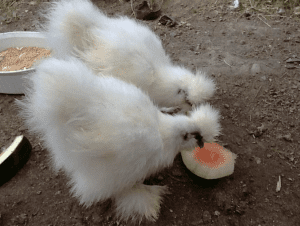
4.2. Space Requirements
Silkies with their docile nature and inability to fly high, have specific space requirements for their well-being. It’s recommended to allocate at least 10 square feet of outdoor run space per Silkie chicken to ensure they have enough room to roam, forage, and exhibit natural behaviors. This space should be secure and predator-proof. Inside the coop, provide 2-3 square feet per bird to prevent overcrowding and stress.
Since Silkies don’t roost as high as other breeds, ensure that perches are low to the ground. Adequate space is crucial for their physical health and to maintain a harmonious flock dynamic.
4.3. Bedding and Shelter
Appropriate bedding and shelter are crucial for Silkie chickens’ comfort and health. In the coop, use absorbent bedding like straw, pine shavings, or hemp to keep the area dry and clean, as Silkies are prone to getting their feathers dirty.
Change the bedding regularly to prevent moisture buildup and maintain hygiene. Provide a sheltered area in the outdoor run to protect them from harsh weather, as their unique feathering offers less protection against rain and cold.
A well-ventilated, dry, and cozy coop ensures Silkies stay healthy and happy, reducing the risk of respiratory issues and other health problems common in damp conditions.
4.4. Diet and Nutrition
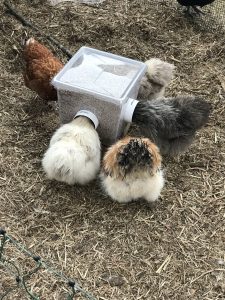
Silkie chickens require a balanced diet to maintain their health and vitality. A high-quality poultry feed formulated for small breeds should form the basis of their diet, providing essential nutrients, vitamins, and minerals. Incorporate a variety of grains, seeds, and occasional treats like fruits and vegetables for diversity. Silkies also benefit from protein-rich foods like mealworms, especially during molting to support feather regrowth. Ensure constant access to fresh, clean water.
While Silkies are not heavy eaters, monitoring their diet for proper nutrition is key to preventing obesity and maintaining their distinctive fluffy plumage in top condition.
5. Health and Wellness
5.1. Common Health Issue
Maintaining the health and wellness of Silkie chickens involves regular monitoring and preventive care. Due to their unique feathering, Silkies are prone to external parasites like mites and lice, especially after the rain so routine checks and treatments are essential. Make sure you always have treatments to hand ready to use.
Silkies are also susceptible to respiratory issues, especially in damp conditions, so ensuring a dry, well-ventilated coop is crucial. Providing a balanced diet, clean water, and a stress-free environment supports their overall health. Regular interaction and observation help in early detection of potential health issues, ensuring these delightful birds lead a healthy and happy life.
5.2. Preventative Care
Preventative care is vital for maintaining the health of Silkie chickens. Regular deworming and tonics to build up their immune systems against common poultry diseases are essential to keep them healthy. Inspect their unique feathering regularly for signs of parasites, such as mites and lice, and treat promptly. Ensure their living quarters are clean, dry, and well-ventilated to prevent respiratory issues.
A balanced diet with adequate nutrition supports their immune system. Provide a stress-free environment by maintaining a consistent routine and protecting them from predators. Early identification and management of health concerns are crucial, so regular health checks by a veterinarian familiar with poultry can be beneficial.
6. Breeding and Raising Silkies
As a chicken breeder of over 22 breeds I always vowed and declared I would not breed Silkies – I thought they were silly little chickens. Well guess what? Everyone that came to buy chicks and chickens from me always asked, “Do you have any Silkies?” It only took me a week or two to get smart and I said to my partner can you build me another enclosure. We are going to breed SIlkies. He said, “I thought you said we weren’t going to breed Silkies”. Well when all your clients ask whether you have any, I decided I would be foolish not to do so. After that Silkies became our biggest money maker.
Silkies are known for being more ornamental than productive in terms of egg laying. On average, a Silkie hen will lay about 100 to 120 eggs per year, which equates to roughly 3 eggs per week. However, this can vary depending on factors like their environment, diet, and overall health. Silkies are also more inclined to go broody and want to sit on their eggs rather than continue laying, which can affect their total egg production.
What I noticed was that Silkies were always quite desperate to be mothers. They would go broody 3-4 times a year. So, if you want breed chickens and you want a great mother and have a Silkie or 2 in your flock and a Silkie Rooster, you are ready to breed silkies. I noticed they were better mothers than a lot of other breed.

6.1. Breeding Tips
To make certain breeding Silkie chickens is a rewarding experience, requires careful consideration and planning.
Firstly, select healthy and well-tempered breeding pairs to ensure the best genetic traits are passed on.
Silkies are known for their brooding instinct, so ensure the hen has a comfortable, secluded nesting area to lay and incubate her eggs.
It’s important to monitor the hen’s health closely during this period, as their dense feathers can sometimes hide issues.
Limit the number of eggs under a Silkie hen to about six, as their small size can make it challenging to cover more. Remove other eggs regularly. It is not uncommon for a broody dilkie to collect a number of eggs laid by other chickens. Maintain a calm and safe environment for the breeding pairs, as stress can affect fertility and brooding success.
Provide a nutritious diet rich in protein and calcium to support egg production and chick development. Regularly check for fertility in the eggs, and be prepared to assist with hatching if necessary, as Silkies’ fluffy feathers can sometimes hinder the process.
I’ve found it immensely helpful to provide broody hens with their individual food and water dishes right beside their nesting area. This practice ensures they can nourish themselves without having to abandon their treasured eggs. These cages make your life simple.
It’s not uncommon for some chickens to become so dedicated to their nesting duties that they might neglect their own nutritional needs, preferring to stay with the eggs rather than eat.
To address this, I create a partition separating the broody hen from the rest of the flock. I did not know about these nesting cages at the time. They would have made my life easier.
This separation not only prevents other hens from intruding into her space and potentially laying more eggs in her nest but also ensures that her food remains undisturbed.
This approach has proven effective in maintaining the health and well-being of the broody hen while she fulfills her natural instinct to nurture her chicks.
6.2. Raising Chicks
Silkie chickens are renowned for their exceptional maternal instincts, often regarded as perpetually great mothers. When raising Silkie chicks, it’s advantageous to leverage these natural instincts. A Silkie hen typically exhibits strong brooding behavior, diligently sitting on her eggs and later, attentively caring for her chicks. This instinctive care significantly simplifies the chick-rearing process, as the mother hen naturally teaches her young essential skills like foraging and preening.
For the best outcomes, ensure the mother hen and her chicks are housed in a safe, calm environment, free from disturbances. This setting allows the mother hen to focus on nurturing her brood without stress. It’s important to provide easy access to chick starter feed and fresh water, ensuring both the hen and chicks receive adequate nutrition. Observing the mother hen with her chicks offers invaluable insights into natural chicken behavior, showcasing the strong bond and teaching dynamics inherent in these fluffy, caring birds. Their innate mothering ability not only fosters healthy chick development but also adds a heartwarming aspect to the experience of raising Silkies.
7. Silkies as Pets

Silkie chickens make delightful pets due to their gentle and affectionate nature. Their calm and friendly demeanor makes them suitable for families, including those with children. Silkies enjoy human interaction, often showing a curious and sociable attitude, making them more akin to a household pet than typical poultry. Their small size and unique appearance, with fluffy plumage and striking features, add to their appeal.
Silkies are also relatively low-maintenance, requiring basic care and attention. Their tendency to be less flighty and more approachable than other breeds makes them an excellent choice for first-time chicken keepers or those looking for a companionable backyard pet.
7.1. Compatibility with Children
Silkie chickens are exceptionally well-suited as pets for children, thanks to their docile and gentle nature. Their small size and fluffy appearance naturally attract children, while their calm temperament makes them less intimidating and easier to handle. Silkies typically enjoy being gently held and petted, allowing for interactive and educational experiences for kids. They can teach children about responsibility, care, and the basics of animal husbandry. It’s important, however, to supervise interactions to ensure both the safety of the child and the chicken. This compatibility makes Silkies an ideal choice for families seeking a pet that offers both companionship and learning opportunities.
7.2. Interaction and Social needs

Silkie chickens are exceptionally well-suited as pets for children, thanks to their docile and gentle nature. Their small size and fluffy appearance naturally attract children, while their calm temperament makes them less intimidating and easier to handle. Silkies typically enjoy being gently held and petted, allowing for interactive and educational experiences for kids. They can teach children about responsibility, care, and the basics of animal husbandry. It’s important, however, to supervise interactions to ensure both the safety of the child and the chicken. This compatibility makes Silkies an ideal choice for families seeking a pet that offers both companionship and learning opportunities.
8. Challenges and Considerations
8.1. Weather Sensitivity
Silkie chickens are particularly sensitive to adverse weather conditions due to their unique feathering. Their fluffy plumage, while visually striking, is not as waterproof as traditional chicken feathers, making them more vulnerable to wet and cold climates.
In rainy or snowy conditions, Silkies can easily become damp and chilled, which can lead to health problems like hypothermia or respiratory issues. To protect them, it’s crucial to provide a dry, well-insulated, and draft-free coop.
During extreme heat, they need shade and plenty of water to prevent overheating. Adequate shelter and proactive care are essential to keep these delicate birds safe and comfortable in varying weather conditions.
8.2. Predation Risks
Silkie chickens’ vulnerability to predators, especially aerial ones like eagles and hawks, is a significant concern for owners. The experience of losing chickens to these predators can be distressing and highlights the importance of robust protective measures. Hawks and eagles typically leave behind a distinctive ring of feathers at the attack site, indicating their method of swiftly capturing and flying away with their prey.
To mitigate such risks, it’s crucial to consider all potential local predators and adapt the chickens’ environment accordingly. Overhead netting becomes an essential defense against birds of prey, effectively preventing them from accessing the chickens. This, coupled with a sturdy outer enclosure, forms a comprehensive protective barrier. The enclosure should be strong and secure enough to thwart not just aerial predators, but also ground threats like foxes. Proactive measures, including regular checks and maintenance of the enclosure, are key to ensuring the safety and well-being of Silkie chickens in various geographical locations with diverse predatory challenges.
9. Why Choose Silkies?
9.1. Personal Experiences
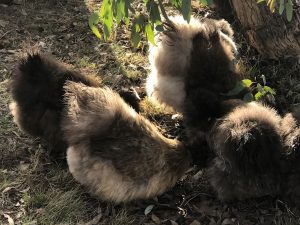
From my personal experience, choosing Silkie chickens has been incredibly rewarding.
Their endearing personalities and striking appearance make every day enjoyable. Silkies’ friendly and calm nature creates a unique bond between them and their keepers, offering a more interactive experience compared to other breeds.
Their mothering instincts and gentle demeanor make them excellent for families with children. The joy of watching them exhibit natural behaviors in a garden setting is unparalleled.
Despite some care challenges, their affectionate nature and the satisfaction of successfully nurturing these unique birds make Silkies an ideal choice for both novice and seasoned poultry enthusiasts.
9.2. Advantages Over Other Breeds
Silkies chickens stand out from other breeds with several key advantages.
Their gentle and docile nature makes them perfect as family pets, especially safe and engaging for children. Silkies are known for their exceptional brooding abilities, often used to hatch and rear chicks from other breeds.
Their small size and lower tendency to wander make them ideal for smaller backyards. Additionally, their unique, fluffy appearance adds an ornamental quality to any setting. While they require specific care, their friendly demeanor and strong maternal instincts offer a unique, fulfilling experience unmatched by more conventional chicken breeds.
10. Conclusion on Silkie Chickens
10.1. Recap of Silkie Chicken Characteristics
Silkie chickens are distinguished by their unique, fluffy plumage, resembling silk, and their unusually gentle and friendly temperament. They possess distinctive features like black skin and bones, blue earlobes, and an extra toe on each foot. Silkies are small in size, making them well-suited for family environments, including those with children. They are excellent mothers, known for their strong brooding and nurturing instincts. While they require specific care due to their sensitivity to weather and vulnerability to predators, their affectionate nature and captivating appearance make them a beloved choice among poultry enthusiasts and pet owners seeking a charming, sociable bird.
10.2. Final Thoughts on Silkie Chickens
In conclusion, Silkie chickens are not just poultry; they’re feathered friends with a charm that captivates and delights. Their distinctive looks and endearing behaviors make them more than just birds; they become part of the family. While their care demands attention to detail, especially regarding their housing and protection from predators, the rewards are immense. From their therapeutic presence to the joy of watching their maternal prowess, Silkies offer a uniquely heartwarming experience. Whether you’re a seasoned chicken keeper or new to poultry, Silkies bring a special kind of joy and fulfillment that enriches the experience of caring for these remarkable birds.
Frequently Asked Questions
FAQs about Silkie Chickens
Can Silkie chickens lay eggs for consumption?
Yes, Silkies do lay eggs that are perfectly fine for consumption. Silkie eggs are smaller than standard chicken eggs but are known for their taste and nutritional value. However, Silkies are not prolific layers, typically laying around 100 to 120 eggs per year.
Do Silkie chickens require special care compared to other breeds?
Silkies require some specific care due to their unique feathers, which are not water-resistant. Silkies
+need a dry, draft-free coop to prevent them from getting chilled. Also, their inability to fly high necessitates secure protection against predators.
Are Silkie chickens good with children?
Absolutely. Silkies are known for their gentle and friendly nature, making them excellent pets for families with children. Their calm demeanor and tolerance for handling make them suitable for interactive experiences with kids.
How long do Silkie chickens typically live?
With proper care, Silkies can live for about 7-9 years, sometimes even longer. Their lifespan is influenced by factors like genetics, diet, environment, and overall quality of care.
Can Silkies be kept with other chicken breeds?
Silkies can be kept with other gentle and non-aggressive chicken breeds. However, due to their docile nature, they may be bullied by more dominant breeds. It’s important to monitor their interactions and ensure a harmonious environment.
HOw To Get Rid Of the FLies in a Chicken Coop
5 Foods To Avoid Feeding Your Chickens

